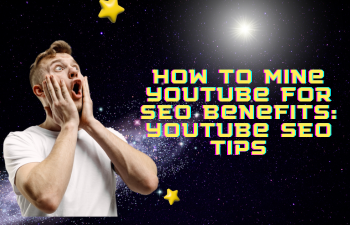 Digital Marketing
Digital Marketing
How To Mine YouTube For SEO Benefits: YouTube SEO…
Youtube SEO Tips
Anyone who works in an industry with a significant digital presence should know that SEO stands for search engine optimization — but what they might not know is that “search engine” and “Google” aren’t technically synonymous. Sure, Google is utterly dominant in the world of standard organic search, but Bing and other alternatives like DuckDuckGo have their uses.
Beyond that, there are internal search functions available on some of the biggest websites in the world. Sites like Amazon, with its comprehensive product search, and sites like YouTube. It’s perfectly possible to pursue an SEO campaign targeting a non-Google search engine — and it can even be worthwhile in specific circumstances.
YouTube is one of Google’s subsidiaries, yes, but it’s distinct from the Google search engine. What’s more, it now serves as the second biggest search engine in the world. In this piece, we’re going to look at some ideas for using YouTube as an SEO weapon. Let’s begin:
Take inspiration from Google’s video results
When you search for something in Google, you don’t just get the plain text SERPs: you also get various other results accessible (for the most part) through category options at the top of the page. The first access Google’s ever-changing index of news stories, which image search is extremely useful for those in need of stock images — but the third option is Video, and that’s the one you should be paying the most attention to.
What’s interesting about this section is that it doesn’t just list videos from YouTube: it lists them from various sources, including other video hosts and even standard sites that just happen to have some embedded videos (it can even point to specific parts of videos). This makes it great for getting inspiration: the results differ from those produced by the YouTube search, but you still know that there’s the insight to be gleaned about how the Google algorithm works — and you can use it to make better videos.
Compete hardest for long-tail keywords
Long-tail keywords (core keywords built upon with extended descriptions) are incredibly important in standard Google search, and they’re similarly important in YouTube. Consider that the results of YouTube’s internal search are much less likely to see clicks through to subsequent pages: fewer results are listed on each page, and viewers would rather click on videos that might interest them than spend large amounts of time looking around for their perfect content.
So how are you supposed to get your video performing? It’s simple: instead of trying to compete with the huge channels almost monopolizing views on various broad topics, you can go for the more niche searches and topics. As video marketing expert Sean Cannell put it on the Stellar Life podcast, ranking for “low carb” is going to be incredibly hard, but ranking for “low carb meal prep for weight loss” could be achievable.
Put work into your video thumbnails
SEO is about more than appearing in search results — it’s also about being selected. In regular Google SERPs, the work must go into improving the metadata to make your results more appealing. In YouTube search results, however, the work should go into improving your thumbnails, because they’re hugely significant. This is why the most popular channels use the same designs over and over again, however generic it makes them seem.
Let’s say you have a video on YouTube featuring a comprehensive review of a popular product, but it isn’t getting many views. Ask yourself this: what does the thumbnail look like? If it’s text against a black background, or simply a random frame taken from the video, it isn’t going to stand out to searchers — but update it to feature you with an exaggerated expression on your face and your outstretched hand holding the product, and traffic will pick up.
Cross-promote with your written copy
It’s safe to say in this context that you don’t just want visits to your YouTube videos: you also want more visits to your website and want to know how you can make that happen using YouTube. Well, it’s perfectly viable — you just need to implement some cross-promotion using your video content and your written content.
At the end of each video, include some annotation links pointing to relevant pieces of work on your website. If the video met or exceeded the viewer’s expectations, they may want to find out more about your business. You can also adapt existing content for the video format: for instance, take a high-value article on your website, record it in audio, add some slides or even animations, and release it as a video. If you pointedly leave something out, you then have even more cause to point someone to the article that inspired it.
Conclusion
If you’re uploading videos to YouTube, you should try to make the most of them. If you use the tips we’ve looked at here, you should be able to improve the SEO performance of your YouTube videos and your main website.
